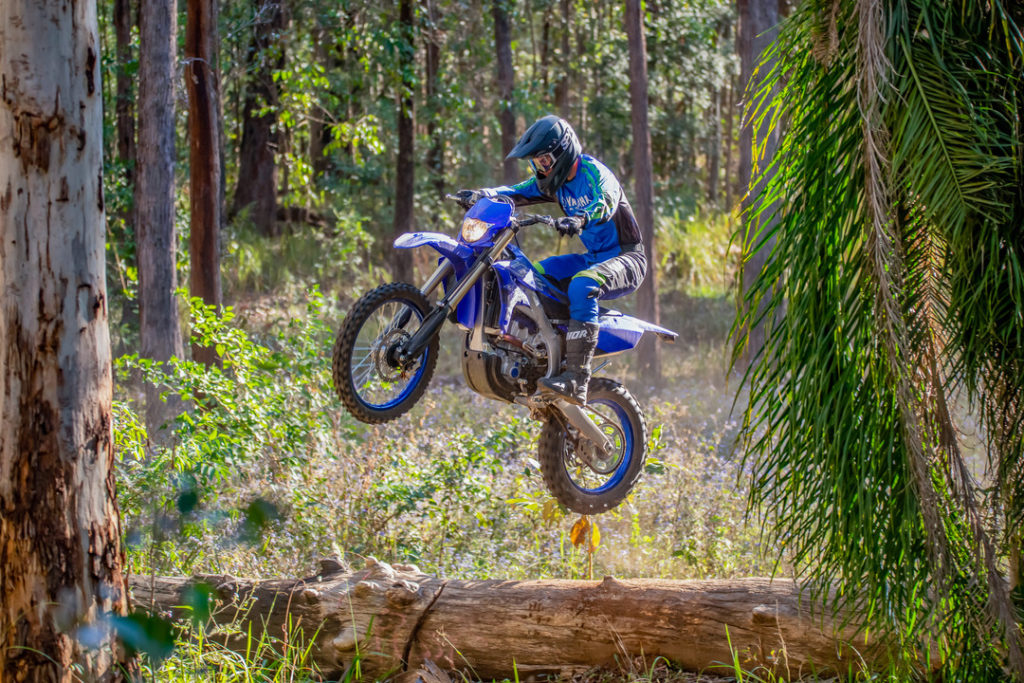2022 YAMAHA WR250F: AN EVOLUTIONARY SNAPSHOT
Since it first arrived in 2001, the WR250F has been an enduring success story for Yamaha in Australia. Originally developed with the input of several Aussie riders, the WR250F has gone on to consistently be the biggest-selling 250cc four-stroke enduro bike in Oz for two decades. And after testing the recently released 2022-model WR250F – which came in for sweeping changes – we can categorically say it’s the best WR250F ever produced. And so it ought to be, as this is the 22nd iteration of the model, plus a few key Aussies have been instrumental in the development process for this latest machine.

So, to help put Yamaha’s all-new 2022 WR250F in context, let’s reflect the model’s fascinating evolution over the past 21 years..

PRE 2001: To ensure the machine was designed and set up to suit Australia’s unique conditions, it was secretly developed and fine-tuned over the course of a few years with the input of Aussie riders such as Geoff Ballard, Stefan Merriman, Ben Grabham, Glenn Kearney and Stuart Morgan – all of whom worked in conjunction with YMC in Japan and/or Yamaha Motor Australia’s (YMA) Peter Payne. These days, Peter Payne is YMA’s ‘Special Projects’ man, and still pivotal in the development of Yamaha’s WR-F models, two decades down the track.

2001: When Yamaha first released its WR250F back in 2001, it was a revolution. The machine was seen as the first high-performance 250cc four-stroke enduro bike that didn’t blow up, and Australian trailriders and racers bowled each other over in the stampede to buy this YZ250F-inspired off-road rocketship.

2003: An electric starter was fitted (mounted in front of the cylinder), the engine got an auto decomp and revised exhaust cam, the suspension settings were made much firmer, the fuel tank capacity was upped to 10 litres, and the rear brake was upgraded.
2005: The frame was made slightly slimmer, lighter and narrower through the rear-end, and the fuel tank’s capacity was reduced from 10 to 8 litres.

2007: Between 2001 and 2006, there were surprisingly few mods of substance. Sure, there were refinements to engine, suspension and ergos, but it really wasn’t until 2007 that the model got a significant update. But even then, the all-new alloy frame (which replaced the chromoly unit) wasn’t accompanied by any notable improvements to powerplant or suspension.
2009: There were refinements to suspension settings and a few cosmetic changes (the engine covers move from grey to black, for instance), plus updates to both the CDI and clutch.

2015: Between 2007 and 2014, the WR250F pretty much sat in a time warp and slowly but surely drifted off consumers’ radar. Trailriders opted for larger-capacity machines or two-strokes, while off-road racers preferred to modify current-generation motocross bikes, rather than squeeze weight savings and p2015: Between 2007 and 2014, the WR250F pretty much sat in a time warp and slowly but surely drifted off consumers’ radar. Trailriders opted for larger-capacity machines or two-strokes, while off-road racers preferred to modify current-generation motocross bikes, rather than squeeze weight savings and performance gains from the ageing WR250F. That is, until the all-new 2015 WR250F arrived. Based heavily on its YZ250F motocross cousin, the 2015 WR250F was an entirely new quarter-litre beast. In addition to the new rolling chassis and radically different bodywork, the five-valve, carb-fed engine that had served the WR250F for 13 long years was finally replaced with the all-new DOHC, four-valve, fuel-injected powerplant – the same reverse-mounted donk that was used by the current-generation YZ250F, but adapted for off-road use.

2018: A bunch of mods to the engine (which mirrored what the 2017 MX and cross-country models had received) boosted power and torque by about 15%. Meanwhile, the suspension action was made more progressive, the braking power was improved, and a few additional protection parts were fitted.

2020: Sweeping mods to the engine and alloy perimeter frame were accompanied by slimmer and more streamlined bodywork, a lower seat, increased tunability, updated suspension, and a bunch of refinements to other key componentry. The design goals were all about making the machine faster, lighter and more agile, without compromising its notorious stability.

2022: After nothing more than a graphics tweak for 2021, the WR250F came in for sweeping changes for 2022. The updates were based heavily on mods made to its MX cousin, the YZ250F, but tuned for off-road riding, and include significant changes to engine, frame, suspension and brakes, along with refinements to several other components – such as triple clamps, bar mounts, instrumentation, footpegs, axles and tyres.









Be the first to comment...